Crafting a powerful Google Ads campaign demands precision, careful planning, and ongoing optimization. Whether you’re launching your first campaign or revamping existing efforts, the right structure can make all the difference. From pinpointing precise keywords to smart budget allocation and hyper-focused targeting, a strong campaign foundation is the key to helping your ads reach peak performance.;
Let's dive into a four-step process that takes your Google Ads from average to outstanding, delivering impressive results tailored to your business goals.
Over time, the athlete becomes more savvy but also understands that they can defer to the experts when needed.
This article delves deeper into the process of creating great Google Ads, without getting bogged down with jargon. Let's get started!
Building an Effective Google Ads Campaign Structure

When you build a Google Ads campaign structure, you'll want to be sure that you're following expert advice just like the athlete—like this four-step process to creating great Google Ads:
|
Step |
Description |
Key Actions |
|
1. Selecting and Structuring Keywords |
Choose relevant keywords and analyze key metrics to target the right audience. |
|
|
2. Setting Expectations: Conversion Metrics & Sales Data |
Use historical data to set realistic expectations for ad performance. |
|
|
3. Level of Investment When It Comes to Keywords |
Determine a budget strategy based on business goals and risk appetite. |
|
|
4. Putting the Numbers to Work |
Forecast performance and refine strategy using collected data. |
|
Once you have these steps in place, you'll be well on your way to producing a Google Ads campaign that will yield the results you want.
Setting Up Campaigns Based on Business Objectives

A healthy campaign begins with your naming structure. You can run as many campaigns as you like, but to maintain efficient Google Ads campaign management, you need to plan the structure of your campaign.
As an example, let's take Doctor Bob, he's a sports medicine specialist. He offers many services and would like to promote all of them, but one campaign for all services is too broad to target customers through their specific search queries.
Dr. Bob needs to improve his Google Ads campaign management by structuring his services into campaigns that focus on each area.
- Campaign One - Concussion Rehab
- Campaign Two - Orthotics
- Campaign Three - Custom Fit Bracing
This will allow Dr. Bob to populate each campaign with keywords that are relevant to each area of service. This means deciding the goal of your campaign—brand awareness, lead generation, or sales.
Types of Campaigns: Search, Display, Shopping, Video, App
At this point, it's necessary to understand which types of ads will be the most profitable for your business:
|
Campaign Type |
Description |
Best Used For |
Key Features |
|
Search |
Text-based ads appear on Google search results pages when users search for relevant keywords. |
|
|
|
Display |
Visual ads (images, banners) appear across Google's Display Network, including websites, apps, and YouTube. |
|
|
|
Shopping |
Product ads appear in search results and the Google Shopping tab, showcasing product images, prices, and details. |
|
|
|
Video |
Video ads appear on YouTube and across the Google Display Network. |
|
|
|
App |
Ads promoting app downloads or engagement appear across Google Search, YouTube, and the Google Display Network. |
|
|
Selecting and Structuring Keywords

Keywords are the internal structure of each search campaign, and you will need to conduct a thorough examination of the keywords that your customers are using to search for your product or service to ensure you are targeting the right keywords.
How to Choose the Right Keywords for Each Ad Group
There are several tools you can use to find the right keywords:
Google Keyword Planner- A free tool by Google designed specifically for Google Ads.
- Provides keyword suggestions, search volume, competition level, and cost-per-click (CPC) estimates.
- A comprehensive SEO and PPC tool that offers keyword research, competitor analysis, and ad campaign insights.
- Includes features like Keyword Magic Tool for detailed keyword exploration.
- Offers extensive keyword research data, including search volume, keyword difficulty, and click-through rates.
- Provides insights into competitor keywords and organic vs. paid search potential.
Best Practices for Grouping Keywords by Theme or Intent
Use Specific Themes for Each Ad Group
- Group keywords that revolve around a single, specific topic or product.
Example: For a "Sports Therapy Services" campaign, create separate ad groups for "Knee Injury Rehabilitation," "Athletic Massage Therapy," and "Post-Surgery Recovery."
Match User Intent
- Separate keywords by intent:
- Transactional Keywords: Target those ready to book (e.g., "schedule sports therapy session").
- Informational Keywords: Appeal to users researching options (e.g., "best exercises for ACL recovery").
- Navigational Keywords: Guide users to specific offerings (e.g., "sports therapy clinic near me").
Leverage Match Types
- Use exact, phrase, and broad match types within ad groups to control keyword reach.
- Keep similar match types in one ad group to maintain consistency in targeting and analysis.
-
Stick to 10-20 tightly related keywords per ad group. Too many keywords can dilute ad relevance and quality score.
- Example: For a "Knee Pain Treatment" ad group, include keywords like "knee injury rehab" and "ACL recovery exercises," avoiding unrelated terms like "back pain therapy."
Optimize for Ad Relevance
- Align grouped keywords with highly specific ad copy and landing pages.
- Example: For an ad group with keywords like "affordable laptops," write ads that emphasize price and budget-friendliness.
Use Long-Tail Keywords
- Group long-tail keywords for niche targeting.
- Example: "Sports massage for runners" and "knee therapy for basketball players" are more specific and likely to attract high-intent users.
Consider Geographic Segmentation
- Group keywords based on location if you're targeting different regions.
- Example: "Best sports therapy in Austin" vs. "Top physical therapists in Dallas."
Regularly Review and Refine Groups
- Monitor keyword performance and reorganize groups as needed. Split underperforming ad groups into smaller, more focused themes.
- Example: If "Athletic Massage Therapy" underperforms, split it into smaller groups like "Deep Tissue Massage for Athletes" and "Injury Prevention Massage."
- Use negative keywords to prevent overlap between ad groups and maintain ad relevance.
- Example: If "Knee Rehabilitation" and "Shoulder Injury Treatment" are separate groups, add "shoulder" as a negative keyword in the "Knee Rehabilitation" group.
Utilize Dynamic Keyword Insertion (DKI)
- For tightly themed groups, use DKI to automatically insert relevant keywords into your ad copy, improving relevance and click-through rates.
- Example: For a "Runner's Therapy" group, DKI can dynamically update ad text to include "therapy for runners," improving click-through rates.
Dr. Bob conducts keyword research for concussions, identifying terms like headache, dizziness, and anxiety. He organizes these into ad groups by symptom but prioritizes bottom-of-the-funnel keywords targeting users ready to seek treatment, not just researching symptoms, to drive appointments.
Organizing Ad Groups for Better Targeting

This is where the ad copy and creative connect to your customers. Once you have your ad groups in place, you can begin to develop the copy for each ad, using targeted keywords and a little creative copy to write text that will attract and entice potential customers to click.
Focus on Relevance:
- Ad groups allow you to cluster keywords and ads around a specific theme, ensuring relevance between the user's search query, the ad, and the landing page.
- This improves your Quality Score, lowers your cost-per-click (CPC), and boosts ad performance.
Enhance Ad Customization:
- Each ad group lets you write tailored ad copy that matches the keywords within it.
- Example: For "Massage Therapy for Athletes," your ad can emphasize "Deep Tissue Sports Massage" or "Injury Prevention Massage."
Improve Targeting and Budget Control:
- Breaking campaigns into multiple ad groups lets you allocate your budget more effectively.
- Example: Assign more budget to "Sports Injury Treatments" and less to "General Fitness Consultations."
Enable Better Reporting and Optimization:
- Ad groups provide granular performance data, helping you pinpoint which keywords and ads are driving results.
- Adjust bids and refine strategies at the ad group level for better ROI.
Tips for Creating Relevant Ad Groups Based on Product Categories or Services
Use Service Categories:
- Group keywords and ads by specific therapy services.
- Example: Create ad groups for "Injury Recovery," "Performance Enhancement," and "Pain Management."
Align with Client Intent:
- Segment ad groups based on user needs or goals (e.g., recovery, prevention, or performance improvement).
- Example: "Prevent Sports Injuries" (preventative) vs. "Recover from ACL Tear" (rehabilitation).
Limit Keywords per Ad Group:
- Stick to 10-20 closely related keywords to maintain focus.
- Example: Group "Sports Massage for Runners" and "Deep Tissue Massage for Cyclists" in one ad group.
- Write ad copy that reflects specific services in the ad group.
- Example: For "Knee Injury Treatment," highlight services like "Expert Therapy for ACL Recovery" or "Fast Knee Pain Relief."
- Create ad groups with long-tail keywords for specific audiences.
- Example: "Back Pain Relief for Weightlifters" vs. "Shoulder Pain Therapy for Swimmers."
Segment by Geographic Location:
- Create location-specific ad groups if targeting clients in different areas.
- Example: "Sports Therapy in Austin" vs. "Athlete Recovery in Dallas."
Use Negative Keywords:
- Add negative keywords to prevent irrelevant clicks and maintain ad relevance.
- Example: In a "Sports Massage Therapy" group, add "spa massage" as a negative keyword.
Test and Adjust Regularly:
- Monitor ad group performance and refine keywords or split ad groups as needed.
- Example: If "Lower Back Pain Treatment" gets too broad, split into subgroups like "Runner's Back Pain Relief" and "Desk Worker Back Therapy."
Advanced Strategies for Campaign Structure Optimization

Optimizing your Google Ads campaign structure can feel overwhelming, but with the right strategies, you can create a structure that's efficient, scalable, and tailored to your goals. Whether you're a small business looking to make the most of limited resources or a marketer managing multi-channel campaigns, having a clear plan is essential.
Utilizing Automated Bidding and Smart Campaigns
When it comes to automated bidding, the key is choosing the strategy that fits your goals. For example, Target CPA is great if you're focused on keeping conversion costs low, while Maximize Conversions helps you get more leads within your budget. If you're looking to boost revenue, Target ROAS is the way to go. The trick is to organize your campaigns by objective—like separating ones for generating leads from those focused on sales—and then keeping an eye on performance to make tweaks as needed.
Smart Campaigns are a lifesaver for small businesses that don't have the time or resources to dive deep into ad management. They handle the heavy lifting by automating targeting, bidding, and even ad creation. Plus, they're cost-efficient thanks to Google's machine learning, and they're especially useful for local businesses, with features like map listings and call buttons. The reports are simple, so you don't need to be a data whiz to understand what's working.
Cross-Channel Integration
If you're running campaigns across multiple channels, like Search, Display, and Video, it's important to give each one a clear role. For instance, use Search Campaigns to capture people actively searching for what you offer, Display Campaigns to get your name out there and retarget visitors, and Video Campaigns to share your brand story in a more engaging way. Make sure the messaging stays consistent across all these channels—your visuals, ad copy, and calls-to-action should all align to build trust and recognition. Retargeting is also a powerful tool. If someone clicked your Search ad but didn't convert, you can follow up with a Display or Video ad to nudge them along.
Google Analytics can really help you see the bigger picture. Set up goals to track things like purchases or form submissions, and use attribution reports to figure out which channels are pulling their weight. You can also dig into audience behavior—metrics like bounce rate and session duration—to spot what's working and where there's room for improvement.
Budget Allocation and Performance Tracking
Figuring out how to split your budget across campaigns is all about focusing on what's working. If a campaign has a low cost-per-acquisition (CPA) or a high conversion rate, it makes sense to give it more budget. Testing new campaigns is also important—sometimes you'll find a hidden gem—and you can always reallocate based on performance as you go.
Metrics like CTR, conversion rates, CPA, and ROAS are key to optimizing campaigns. Break down underperforming ad groups into smaller, focused ones and adjust targeting based on top-performing demographics or regions to maximize results.
Common Mistakes to Avoid in Google Ads Campaign Structure
Building a successful Google Ads campaign requires careful planning and attention to detail, but avoiding common mistakes like overcomplication, neglecting optimization, and poor audience segmentation is just as crucial to achieving your goals.
1. Overcomplicating Campaign Structure
Overcomplicating Google Ads campaign structures is a common mistake. Too many campaigns or ad groups can dilute focus, hinder performance tracking, and create targeting overlaps, wasting your budget on redundant or competing ads. Keep it simple for better results.
To keep things simple and effective, focus on grouping similar keywords, ads, and targeting within a single campaign or ad group. For example, instead of creating separate ad groups for every slight variation of a service, consolidate them under broader, well-defined themes. Prioritize clarity and manageability to ensure your campaigns are easy to monitor and refine.
2. Neglecting Regular Optimization
Even a well-structured campaign can lose its edge if left unchecked. Neglecting regular optimization is a critical mistake that often leads to wasted budget and declining performance over time. Campaigns need consistent monitoring to identify underperforming keywords, ads, or targeting strategies.
Make it a habit to review metrics like CTR, conversion rate, and CPC. Pause or adjust campaigns and ad groups that aren't delivering results and reallocate budget toward top performers. Regular adjustments, such as refining ad copy or updating targeting settings, help keep your campaigns aligned with your goals and market trends.
3. Ignoring Audience Segmentation
Failing to segment your audience properly is another major pitfall. Generic campaigns that try to appeal to everyone often lack the precision needed to drive meaningful Ad results. Without proper segmentation, your ads may reach irrelevant audiences, leading to wasted impressions and clicks.
Effective audience segmentation divides your target market into smaller, specific groups—like runners, swimmers, or weightlifters—based on demographics, behaviors, or interests. Use tools like remarketing lists, customer match, and in-market audiences to refine targeting, ensuring more relevant ads, better engagement, and higher conversions.
Conclusion
A well-structured Google Ads campaign is strategic, optimized, and continuously refined for peak results. By following expert steps to select the right keywords, align your structure with clear business objectives, and leverage advanced tools like audience segmentation and automated bidding, your ads become precise, effective, and impactful. Avoid mistakes such as overcomplicating your setup or ignoring ongoing optimization. Instead, create streamlined, data-driven campaigns that are manageable and consistently deliver. With these principles, you won’t just meet your advertising goals—you’ll surpass them.
Ready to elevate your Google Ads performance? Reach out to Roketto today and discover how we can help enhance your digital marketing strategy.

Chris Onyett
Chris is one of the managing partners at Roketto. His area of expertise is digital marketing and loves sharing and educating on topics like Google Ads, CPC bidding tactics, Google Analytics, and marketing automation. When Chris isn't in the office, he enjoys playing volleyball, mountain biking, and hiking with his American Eskimo.











2.png)
2.png)









